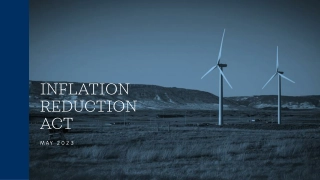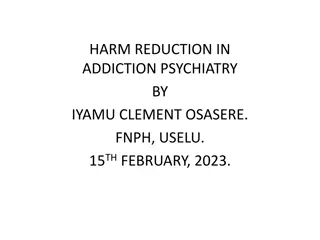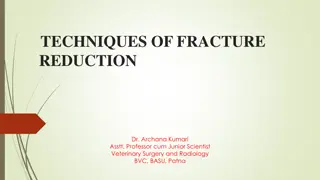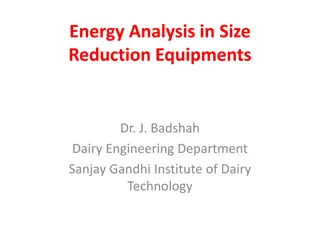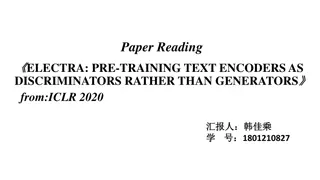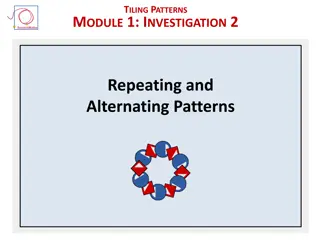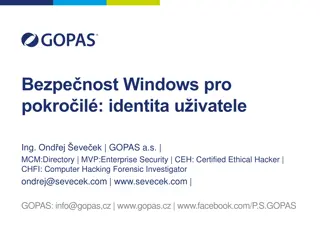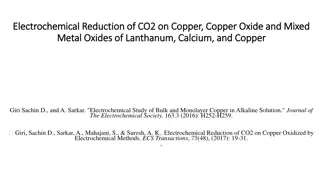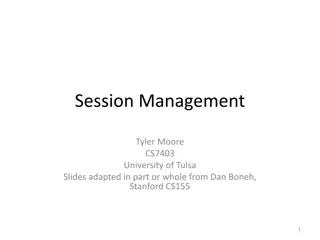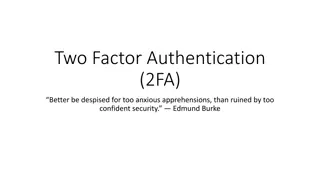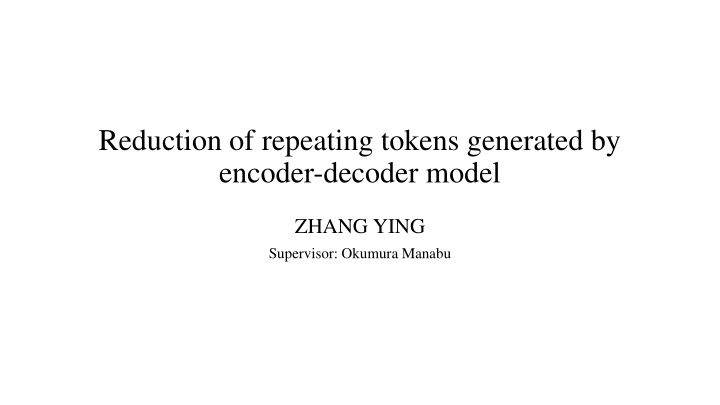
Reducing Repeating Tokens in Encoder-Decoder Model
Explore how to reduce repeating tokens generated by an encoder-decoder model in natural language processing tasks. The model, comprising two neural networks, has shown rapid progress in tasks like machine translation and text summarization. By selecting words with the highest possibility during training and testing for repeating tokens, this study aims to enhance the model's output quality.
Download Presentation

Please find below an Image/Link to download the presentation.
The content on the website is provided AS IS for your information and personal use only. It may not be sold, licensed, or shared on other websites without obtaining consent from the author. If you encounter any issues during the download, it is possible that the publisher has removed the file from their server.
You are allowed to download the files provided on this website for personal or commercial use, subject to the condition that they are used lawfully. All files are the property of their respective owners.
The content on the website is provided AS IS for your information and personal use only. It may not be sold, licensed, or shared on other websites without obtaining consent from the author.
E N D
Presentation Transcript
Reduction of repeating tokens generated by encoder-decoder model ZHANG YING Supervisor: Okumura Manabu
Outline Background Related Research Proposed Method Experiment Conclusion
Background The encoder-decoder model is the model that consists of two neural networks. The past years have witnessed the rapid progress of this model. Now, this model is widely used to solve natural language processing tasks, such as machine translation, for example, Google translation text summarization poetry generation grammatical error correction response generation
Background Train Select word that has highest possibility
Background Test Repeating tokens
Outline Background Related Research Proposed Method Experiment Conclusion
Related Research (SPM SPM) [1] news headline Enc-Dec Example: Input: I come from China and Gold: I am Chinese <EOS> <PAD> <PAD> <PAD> <PAD> <EOS>
Related Research (SPM SPM) ???????? ,?,? = log ? ? ? , SUM Cross Ent. Cross Ent. Cross Ent. Cross Ent. ?,? ?|??| I <EOS> <PAD> Chinese ?1 ?? ?? ??+1 Represents the probability of each word in output vocabulary ?? ? ?|??| ?? ??+1 ?1 ?? ?1=softmax(?? ?1+ ??) ??=AttnDec(?? 1, 1:?) RNN ?? RNN ??+1 Encoder RNN ?1 RNN ?? ?1=softmax(?? ?1+ ??) ?? ?1 ?? ??+1 I ?1 ?2 ?3 ?? come from SUM Sum=1 SUM Represents the probability of each word in input vocabulary ?? . ? ? One One- -hot hot ??????? ?,?,? ,?,? =1 2+ log(?) ? ?2 ?
Outline Background Related Research Proposed Method Experiment Conclusion
Proposed Method (SPM SPM) ???????? ,?,? = log ? ? ? , SUM Cross Ent. Cross Ent. Cross Ent. Cross Ent. ?,? ?|??|, ? ?|??| I <EOS> <PAD> Chinese ?1 ?? ?? ??+1 ?? ??+1 ?1 ?? ?1=softmax(?? ?1+ ??) ??=AttnDec(?? 1, 1:?) RNN ?? RNN ??+1 Encoder RNN ?1 RNN ?? ?1=softmax(?? ?1+ ??) ?? ?1 ?? ??+1 I ?1 ?2 ?3 ?? come from SUM SUM . ? ? One One- -hot hot ??????? ?,?,? ,?,? =1 2+ log(?) ? ?2 ?
Proposed Method Represent sum word frequency of decoded (input) Represent sum word frequency of input Represent average word frequency of decoded(input) Represent average word frequency of input Sum= ????? (decoded(input)) Sum= ????? ????? ? ? ? ? ??????? ?,?,? ,?,? =1 ????? (??????) ????? (?????) 2+ log(?) ? ?2 ? Adjust the way to compute word frequency
Proposed Method ??????? ?,?,? ,?,? =1 2+ log(?) ? ?2 ? Source: I have a puppy Candidate 1: I have a dog Candidate 2: I have a cat Candidate 1 and 2 have same similarity with Source.
Proposed Method ? = (1,1,1,0,1,1) Can I use your phone One-hot vector ? represents a specific word ? ???can represent the meaning of the word, where ?? ?|??| ?????????_????is the word embedding matrix of the input vocabulary use utilize ?1= (1,1,?,?,1,1) RNN ?? ??=softmax(?? ??+ ??) ?2= (1,1,?,?,1,1) ???????1=1 ? ???????2=1 ? ???????? ????can represent the meaning of ?? 2+ log(?) ?1 ?2 ?? 2+ log(?) ??? ??? ?2 ?2 ???????= 1 ??? ( ????? (?????), ????? (??????)) ???????? Compute semantic relation between ? and ?
Proposed Method ????????,?,? Repetition Reduction Model(RRM) SUM Cross Ent. Cross Ent. Cross Ent. Cross Ent. ?? ?|??| ? <EOS> ?2 ?3 ?1 ?? ?3 ?2 ?? ?1 RNN ?? Encoder RNN ?1 RNN ?2 RNN ?3 ?1= softmax(?? ?1+ ??) ?2 ?1 ?3 ?? I ?1 ?2 ?3 ?? I ?1 ?2 ?3 ?? am come from Chinese <EOS> . ? SUM SUM ? ? One One- -hot hot ???????= 1 ??? ( ??? , ??? ?) ?
Outline Background Related Research Proposed Method Experiment Conclusion
Experiment - Machine Translation Setting Dataset KFTT Japanese-English dataset 440k 330,202 length <= 40 Train Data Dev Data 1166 Test Data 1160 Tune Data 1235 Ja Vocab Size 146,726 67,178 (word frequency >= 2) En Vocab Size 190,063 69,283 (word frequency >= 2) Early stop 15 Batch Size 80 Embed Size 300 Hidden Size 300 Optim Adam Learning Rate 1e-3 Layer 2 Bidirectional True RNN LSTM Decode Method Beam search
Experiment - Machine Translation Comparisons Baseline: Seq2seq with attention by Luong et al. (2015) Coverage model by Tu et al. (2016) Metric Multi-BLEU Meteor It consists of two major components: a flexible monolingual word aligner and a scorer. For machine translation evaluation, hypothesis sentences are aligned to reference sentences. Alignments are then scored to produce sentence and corpus level scores. AER(Alignment Error Rate) It is commonly used metric for assessing sentence alignments. It combines precision and recall metrics together such that a perfect alignment must have all of the sure alignments and may have some possible alignments Optimized AER Repeat
Experiment - Machine Translation Metric GOLD : I like apple and I also like cat. Output : I like and also like like dog fish fish. ?????? ???? = max ????? ?????? ???? ????? ???? ???? ,0 ? ?? ????? ?????? ???? > 1 Output GOLD Repeat I 1 2 0 like 3 2 1 dog 1 0 0 fish 2 0 2 SUM - - 3
Experiment - Machine Translation Result Japanese-English Test data Multi-BLEU - 10.37 11.51 18.06 17.85 Method Repeat(rate) Words(ratio) 26734(1.000) 30578(1.144) BLEU1 BLEU2 BLEU3 BLEU4 Meteor Gold Baseline [2] - - - - - - 17575(0.5748) 16932(0.5633) 6065(0.2525) 5511(0.2330) 30.0 31.2 52.9 53.8 13.3 14.4 25.7 26.0 7.1 8.0 14.3 14.4 4.1 4.9 8.6 8.5 14.76 15.38 21.68 21.83 +RRM 30058(1.123) Coverage [3] +RRM 23648(0.885) 24024(0.899)
Experiment - Machine Translation Result ( ) Input Gold Another story has it that he was the first one to bring Moso-chiku (Moso bamboo) to Japan. it is said that he first brought back the first time , he brought back to the first time . Coverage some say that he was first , he brought back the first time . +RRM
Experiment - Machine Translation Result Tune data Method AER AER (opt) Baseline [2] 0.6564 0.6123 +RRM 0.6185 0.5775 Coverage [3] 0.6019 0.5550 0.5934 0.5503 +RRM Japanese: English: It used to also be called ikko shu and monto shu .
Experiment - Machine Translation Result Japanese: GOLD English: It used to also be called ikko shu and monto shu . OUTPUT Both Coverage Coverage + RRM
Experiment - Machine Translation Result 40 Coverage 35 Coverage+RRM KFTT 30 Average Repeat 25 Ja-En Test data 20 15 10 5 0 [1,11) [21,31) [71,81) [91,101) [11,21) [31,41) [41,51) [51,61) [61,71) [81,91) [101,111) Length of Source Sentence
Experiment - Machine Translation Result 100 Coverage Coverage+RRM Gold 90 Average Length of Generation 80 KFTT 70 60 Ja-En Test data 50 40 30 20 10 0 [1,11) [11,21) [21,31) [31,41) [41,51) [51,61) [61,71) [71,81) [81,91) [91,101) [101,111) Length of Source Sentence
Experiment - Machine Translation Setting Train Data Dataset KFTT English-Japanese dataset 440k 330,202 length <= 40 Dev Data 1166 Test Data 1160 Tune Data 1235 Ja Vocab Size 146,726 67,178 (word frequency >= 2) En Vocab Size 190,063 69,283 (word frequency >= 2) Early stop 15 Batch Size 80 Embed Size 300 Hidden Size 300 Optim Adam Learning Rate 1e-3 Layer 2 Bidirectional True RNN LSTM Decode Method Greedy decode
Experiment - Machine Translation Result English-Japanese Test data Multi-BLEU - 15.77 Method Repeat(rate) Words(ratio) 28502(1.000) 34110(1.197) BLEU1 BLEU2 BLEU3 BLEU4 Meteor Gold Baseline - - - - - - 18470(0.5415) 34.1 18.9 11.9 8.0 20.66 +RRM 31933(1.120) 16383(0.5130) 16.57 36.3 20.1 12.5 8.3 20.67 26.93 Coverage[3] 26725(0.938) 4909(0.1837) 22.80 55.1 30.1 18.1 11.7 4325(0.1695) 22.95 56.9 31.6 19.3 12.7 +RRM 25519(0.895) 26.78
Experiment - Machine Translation Result Tune data AER 0.6053 0.6062 0.6220 0.6304 AER(opt) 0.5437 0.5434 0.5370 0.5463 Baseline [2] +RRM Coverage [3] +RRM
Experiment - Response Generation Setting Dataset Facebook ParlAI PersonaChat dataset Train Data 65719 Dev Data 7801 Test Data 7512 Vocab Size 19094 Early stop 12 Pre-trained embedding Glove Batch Size 64 Embed Size 500 Hidden Size 500 Optim SGD Learning Rate 1 Layer 2 Bidirectional False RNN LSTM Decode Method Greedy decode
Experiment - Response Generation Comparisons Baseline: Seq2seq with attention by Luong et al. (2015) Profile Memory model(PM) by Zhang et al. (2018) Metric Perplexity F1 Hits@1 Next utterance classification loss. It consists of choosing N random distractor responses from other dialogues and the model selecting the best response among them, resulting in a score of one if the model chooses the correct response, and zero otherwise. Unique responses Repeat
Experiment - Response Generation Persona 1 Persona 2 I like to ski My wife does not like me anymore I have went to Mexico 4 times this year I hate Mexican food I like to eat cheetos I am an artist I have four children I recently got a cat I enjoy walking for exercise I love watching Game of Thrones [PERSON 1:] Hi [PERSON 2:] Hello ! How are you today ? [PERSON 1:] I am good thank you , how are you. [PERSON 2:] Great, thanks ! My children and I were just about to watch Game of Thrones. [PERSON 1:] Nice ! How old are your children? [PERSON 2:] I have four that range in age from 10 to 21. You? [PERSON 1:] I do not have children at the moment. [PERSON 2:] That just means you get to keep all the popcorn for yourself. [PERSON 1:] And Cheetos at the moment! [PERSON 2:] Good choice. Do you watch Game of Thrones? [PERSON 1:] No, I do not have much time for TV. [PERSON 2:] I usually spend my time painting: but, I love the show.
Experiment - Response Generation Original Persona Revised Persona I love the beach. My dad has a car dealership I just got my nails done. I am on a diet now Horses are my favorite animal To me, there is nothing like a day at the seashore My father sales vehicles for a living. I love to pamper myself on a regular basis. I need to lose weight. I am into equestrian sports. I play a lot of fantasy videogames I have a computer science degree. My mother is a medical doctor I am very shy. I like to build model spaceships. RPGs are my favorite genre. I also went to school to work with technology. The woman who gave birth to me is a physician. I am not a social person. I enjoy working with my hands
Experiment - Response Generation Condition Input Target : Self_persona Your persona: I am an artist Your persona: I have four children Your persona: I recently got a cat Your persona: I enjoy walking for exercise Your persona: I love watching Game of Thrones Hello ! How are you today ? Hi Other_persona Hello ! How are you today ? Partner s persona: I like to ski Partner s persona: My wife does not like me anymore Partner s persona: I have went to Mexico 4 times this year Partner s persona: I hate Mexican food Partner s persona: I like to eat cheetos Hi
Experiment - Response Generation Condition Input Target Both_persona Your persona: I am an artist Your persona: I have four children Your persona: I recently got a cat Your persona: I enjoy walking for exercise Your persona: I love watching Game of Thrones Partner s persona: I like to ski Partner s persona: My wife does not like me anymore Partner s persona: I have went to Mexico 4 times this year Partner s persona: I hate Mexican food Partner s persona: I like to eat cheetos Hello ! How are you today ? Hi No_persona Hi Hello ! How are you today ?
Experiment - Response Generation Result Original test dataset Repeat(rate) Persona Method Perplexity Hits@1 F1 Unique responses Words(ratio) 89866 Gold Baseline/PM 35.16 0.105 0.108 0.177 24042(0.2821) 36.32% 47.24% 85223(0.948) No Persona +RRM 34.97 0.171 20791(0.2369) 87748(0.976) Baseline 34.39 0.107 0.175 20054(0.2349) 42.16% 85355(0.950) +RRM 34.48 35.87 35.53 0.106 0.095 0.096 0.174 0.179 0.178 24612(0.2802) 20225(0.2372) 24247(0.2748) 40.48% 35.24% 38.96% 87826(0.977) 85257(0.949) 88231(0.982) Self Persona PM +RRM Baseline 34.73 0.106 0.172 23090(0.2629) 35.29% 87824(0.977) +RRM 34.75 35.95 35.86 34.01 0.104 0.099 0.093 0.173 0.178 0.163 24180(0.2698) 18049(0.2190) 28693(0.3283) 43.37% 36.69% 29.95% 89629(0.997) 82415(0.917) 87282(0.971) Their Persona PM +RRM Baseline 0.104 0.176 25373(0.2841) 39.19% 89305(0.994) +RRM 34.07 36.17 35.66 0.107 0.093 0.095 0.176 0.174 0.168 19724(0.2414) 20925(0.2390) 23808(0.2788) 35.44% 30.11% 23.32% 81685(0.909) 87561(0.974) 85393(0.950) Both Persona PM +RRM
Experiment - Response Generation Result Revised test dataset Repeat(rate) Persona Method Perplexity Hits@1 F1 Unique responses Words(ratio) 89866 Gold No Persona - Baseline 0.105 0.107 0.177 0.176 34.65 34.61 21523(0.2471) 21715(0.2426) 33.17% 42.43% 87104(0.969) 89510(0.996) +RRM Self Persona PM 35.22 35.84 34.53 34.32 0.092 0.094 0.107 0.103 0.169 0.170 0.171 0.175 25408(0.2836) 32353(0.3419) 24130(0.2797) 22694(0.2605) 36.06% 31.38% 36.01% 34.12% 89600(0.997) 94617(1.086) 86261(0.960) 87126(0.970) +RRM Baseline +RRM Their Persona PM 35.64 35.41 33.96 34.14 0.095 0.095 0.104 0.105 0.175 0.176 0.171 0.175 27306(0.2984) 19192(0.2202) 21719(0.2539) 21305(0.2491) 35.98% 46.38% 31.07% 44.10% 91521(1.018) 87143(0.970) 85550(0.952) 85542(0.952) +RRM Baseline +RRM Both Persona PM 36.74 0.089 0.176 20572(0.2444) 21.19% 84177(0.937) +RRM 35.58 0.095 0.173 22211(0.2581) 29.22% 86049(0.958)
Experiment - Response Generation Result i would rather eat chocolate cake during this season . what club did you go to ? me an timothy watched tv i went to club chino . what show are you watching ? lol oh okay kind of random do you live in a house or apartment ? Gold: we watched a show about animals like him Baseline: i live in a small town with a small town . Baseline +RRM: i am a single woman . i live in a rural area
Outline Background Related Research Proposed Method Experiment Conclusion
Conclusion Based on SPM model, we propose a new loss function(RRM) for the encoder-decoder model to help it reducing repeating tokens. The experiments on two datasets show the effectiveness of RRM. RRM can not only reduce repeating tokens, but also make sure the quality of the generation. But because RRM tends to generate shorter sentence, it may miss some important words. As language model pre-training has been identified the effectiveness for improving many natural language processing tasks, in the future we would like to try these pre-trained models like BERT and GPT2 to fix the problems of our model.
Reference [1] , , , , , . . ,Vol 24, 2018 [2] Luong M T, Pham H, Manning C D. Effective approaches to attention-based neural machine translation[J]. arXiv preprint arXiv:1508.04025, 2015. [3] Tu Z, Lu Z, Liu Y, et al. Modeling coverage for neural machine translation[J]. arXiv preprint arXiv:1601.04811, 2016.

